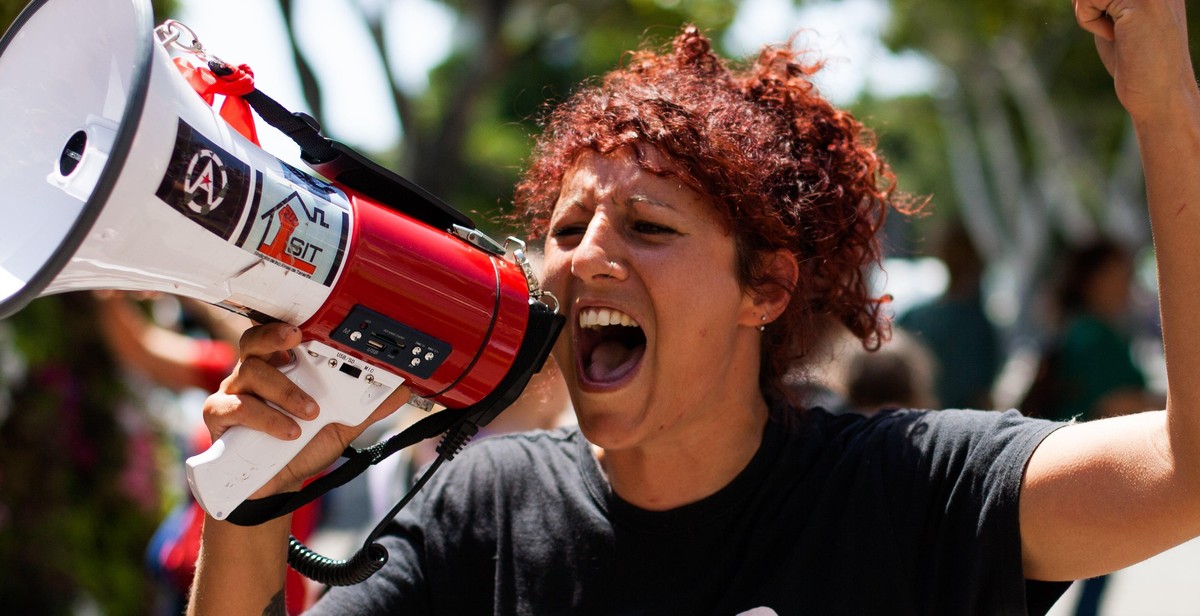How to Conduct a Vaccine Outreach Campaign: Strategies for Reaching Underserved Communities
Vaccines have been a crucial tool in preventing the spread of infectious diseases and saving lives for decades. However, vaccine hesitancy and disparities in access to healthcare have resulted in underserved communities being left behind in vaccination efforts. This is where vaccine outreach campaigns come in.
Conducting a vaccine outreach campaign is a proactive approach to ensuring that everyone in a community has access to vaccines. It involves identifying barriers to vaccine access and implementing strategies to overcome them. The goal is to reach underserved communities, including those who may have limited access to healthcare, language barriers, or distrust of the healthcare system.
Why Vaccine Outreach Campaigns are Important
Vaccine outreach campaigns are important for several reasons. Firstly, they help increase vaccine uptake and coverage rates in underserved communities. This, in turn, helps prevent the spread of infectious diseases and protects the health of the entire community.
Secondly, vaccine outreach campaigns help address health disparities and promote health equity. By reaching out to underserved communities, vaccine outreach campaigns ensure that everyone has access to the same level of healthcare and protection against infectious diseases.
Lastly, vaccine outreach campaigns help build trust in the healthcare system. By engaging with and listening to the concerns of underserved communities, healthcare providers can address misconceptions and build trust with these communities.

Understanding Underserved Communities
Underserved communities refer to populations that have limited access to healthcare and other resources due to various factors such as poverty, discrimination, language barriers, and lack of transportation. These communities are often marginalized and face significant health disparities compared to their more privileged counterparts.
Defining Underserved Communities
Underserved communities can be defined in different ways depending on the context and the population being served. In the context of vaccine outreach campaigns, underserved communities may include:
- Racial and ethnic minorities
- Low-income individuals and families
- Immigrants and refugees
- Individuals with limited English proficiency
- Homeless individuals
- Individuals with disabilities
- Rural and remote communities
It is important to note that these communities are not mutually exclusive and may overlap. For example, a low-income immigrant family living in a rural area may face multiple barriers to accessing vaccines.
Barriers to Vaccine Access
Underserved communities face various barriers to accessing vaccines, including:
- Lack of trust in the healthcare system and vaccines
- Language barriers and limited health literacy
- Transportation issues and lack of access to healthcare facilities
- Financial constraints and lack of health insurance
- Cultural and religious beliefs
- Mistrust and fear of government and authority figures
- Systemic racism and discrimination
These barriers can be complex and interrelated, making it challenging to design effective outreach strategies. However, understanding and addressing these barriers is essential to ensure equitable vaccine access for all communities.
| Barriers | Examples of Strategies |
|---|---|
| Lack of trust in the healthcare system and vaccines | Engage trusted community leaders and organizations to promote vaccine confidence and provide accurate information. |
| Language barriers and limited health literacy | Provide vaccine information and resources in multiple languages and use plain language that is easy to understand. |
| Transportation issues and lack of access to healthcare facilities | Partner with local transportation providers and offer mobile vaccine clinics in underserved areas. |
| Financial constraints and lack of health insurance | Offer free or low-cost vaccines and connect individuals with resources to enroll in health insurance programs. |
| Cultural and religious beliefs | Respect and acknowledge diverse cultural and religious beliefs and provide culturally sensitive vaccine information and services. |
| Mistrust and fear of government and authority figures | Partner with trusted community leaders and organizations to build relationships and address concerns and misconceptions. |
| Systemic racism and discrimination | Address and dismantle systemic racism and discrimination in healthcare and vaccine distribution systems. |

Developing a Vaccine Outreach Campaign
Developing a vaccine outreach campaign is crucial in promoting vaccine acceptance and increasing vaccination rates in underserved communities. Here are some key strategies to consider:
Identifying Target Communities
Before launching a vaccine outreach campaign, it is important to identify the target communities that are most in need of vaccination. This could include communities with low vaccination rates, high rates of vaccine-preventable diseases, or communities that have been disproportionately affected by the COVID-19 pandemic. Once you have identified your target communities, you can tailor your outreach efforts to meet their specific needs and concerns.
Creating a Message That Resonates
When developing your vaccine outreach message, it is important to consider the cultural and linguistic diversity of your target communities. Your message should be clear, concise, and culturally appropriate, and should address any concerns or myths that may be preventing people from getting vaccinated. It is also important to emphasize the benefits of vaccination, both for individuals and for the community as a whole.
Choosing the Right Outreach Channels
Choosing the right outreach channels is key to reaching your target communities effectively. This could include social media, community events, local media outlets, or even door-to-door outreach. It is important to choose channels that are accessible and relevant to your target communities, and to use a variety of channels to ensure maximum reach.
Partnering with Local Organizations
Partnering with local organizations can help increase the effectiveness of your vaccine outreach campaign. This could include community-based organizations, faith-based organizations, healthcare providers, or local government agencies. By partnering with these organizations, you can tap into their existing networks and resources, and work together to address any barriers to vaccination that your target communities may be facing.
| Target Community | Message | Outreach Channels | Local Partners |
|---|---|---|---|
| Latinx Community | Get vaccinated to protect yourself and your loved ones. Vaccines are safe and effective. | Social media, community events, local Spanish-language media outlets, door-to-door outreach | Local community-based organizations, Spanish-speaking healthcare providers, local government agencies |
| Rural Community | Protect yourself and your community from vaccine-preventable diseases. Vaccines are free and available at your local health clinic. | Community events, local media outlets, door-to-door outreach | Local healthcare providers, rural health clinics, local government agencies |
By following these strategies and tailoring your outreach efforts to the specific needs of your target communities, you can help increase vaccine acceptance and uptake in underserved communities.

Implementing Your Campaign
Now that you have a solid plan in place, it’s time to start implementing your vaccine outreach campaign. Here are some strategies for reaching underserved communities:
Planning and Executing Events
One effective way to reach underserved communities is by hosting events that offer vaccines on-site. These events can be held at community centers, churches, schools, or other locations that are easily accessible to the community. Make sure to advertise the event well in advance through local media outlets and social media platforms. On the day of the event, have a team of trained healthcare professionals on hand to administer the vaccines and answer any questions that community members may have.
Engaging with Community Leaders
Another important strategy is to engage with community leaders and organizations. Reach out to local leaders, such as pastors, community organizers, and elected officials, and ask for their support in promoting the vaccine and your outreach efforts. Consider partnering with local organizations, such as food banks or neighborhood associations, to distribute educational materials and provide vaccine access.
Providing Educational Materials
It’s important to provide educational materials that are accessible and easy to understand. Use plain language and visuals to explain the benefits of the vaccine and address common concerns and misconceptions. Consider translating materials into other languages to reach non-English speaking communities. Distribute materials through various channels, such as social media, community events, and local businesses.
Measuring Success
Measuring the success of your campaign is crucial to determine what strategies are working and what areas need improvement. Track the number of vaccines administered at events and through other outreach efforts. Conduct surveys to gather feedback from community members and evaluate the effectiveness of your educational materials. Use this data to make informed decisions and adjust your outreach strategies accordingly.
| Strategy | Description |
|---|---|
| Planning and Executing Events | Host events that offer vaccines on-site at easily accessible locations |
| Engaging with Community Leaders | Partner with local leaders and organizations to promote the vaccine and outreach efforts |
| Providing Educational Materials | Use accessible, easy-to-understand materials to educate community members about the vaccine |
| Measuring Success | Track the number of vaccines administered and gather feedback to evaluate the effectiveness of outreach efforts |

Conclusion
Conducting a vaccine outreach campaign to reach underserved communities is a critical step in ensuring that everyone has access to life-saving vaccines. It requires a strategic approach that takes into account the unique needs and challenges of each community. By using the strategies outlined in this article, you can increase the effectiveness of your outreach efforts and help more people get vaccinated.
Key Takeaways
- Develop a comprehensive plan that includes targeted outreach, community partnerships, and culturally competent messaging.
- Engage with community leaders and trusted messengers to build trust and credibility.
- Use a variety of communication channels, including social media, flyers, and community events, to reach a wider audience.
- Offer incentives and remove barriers to access, such as providing transportation or hosting clinics in convenient locations.
- Track your progress and adjust your approach as needed to ensure that you are reaching your target audience.
Final Thoughts
Conducting a vaccine outreach campaign is not easy, but it is necessary to ensure that everyone has access to vaccines. By using the strategies outlined in this article and working closely with community partners, you can make a difference in the lives of those who are most vulnerable. Remember to be patient, persistent, and responsive to the needs of the communities you serve. Together, we can overcome the challenges of vaccine hesitancy and ensure that everyone has the protection they need to stay healthy.
